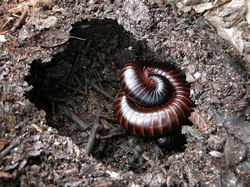KimJongFun
Arachnopeon
- Joined
- Jun 10, 2020
- Messages
- 11
Hello, I have an archospireptus gigas, and for the past month he has barely moved, he ate a bit of lettuce last week but apart from that zero effort in eating.
I don't think he is sick as every few hours he changes position and I see him "groom himself" or clean himself either way.
Any ideas? Is he molting?
Cheers
I don't think he is sick as every few hours he changes position and I see him "groom himself" or clean himself either way.
Any ideas? Is he molting?
Cheers

